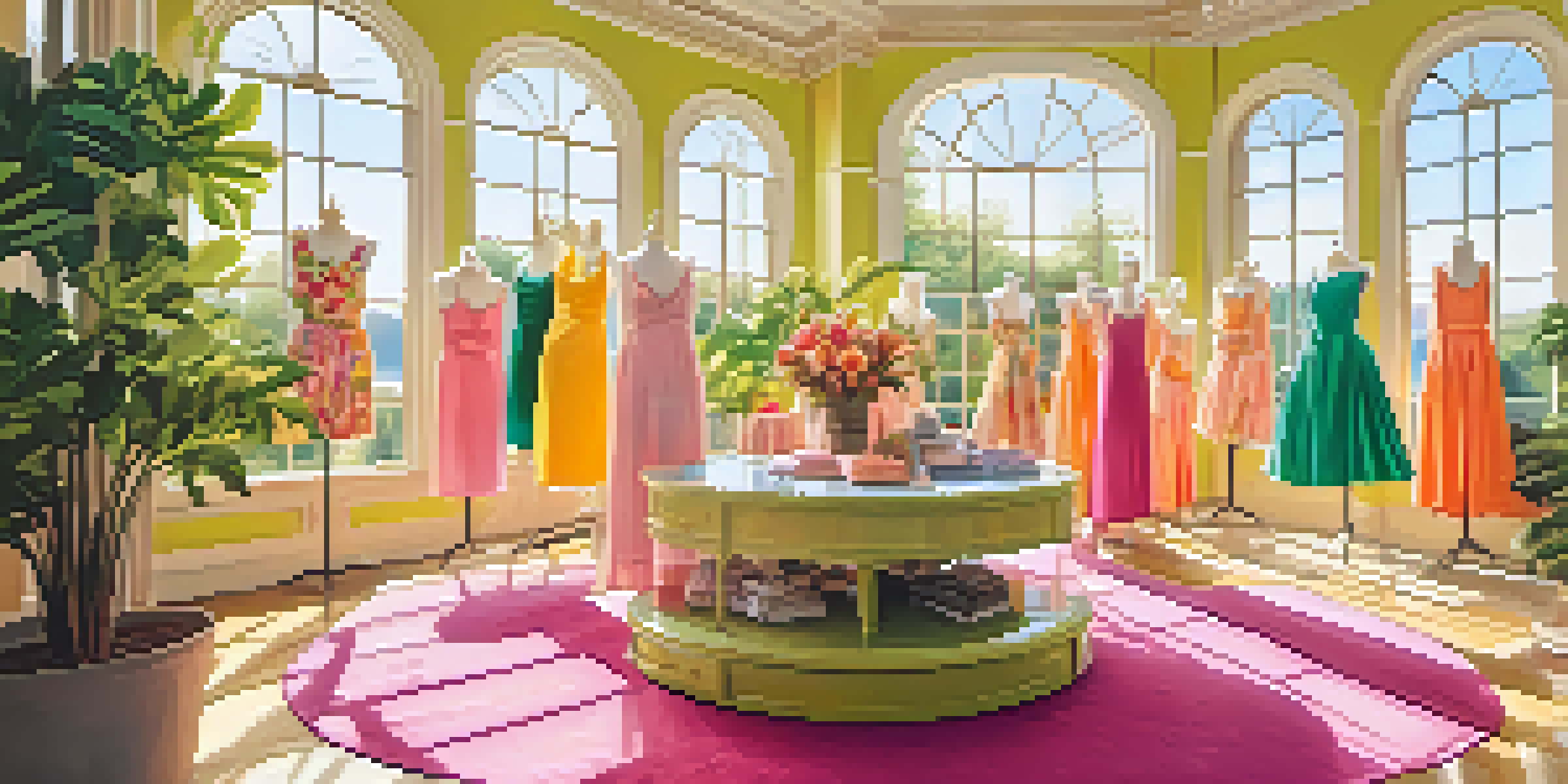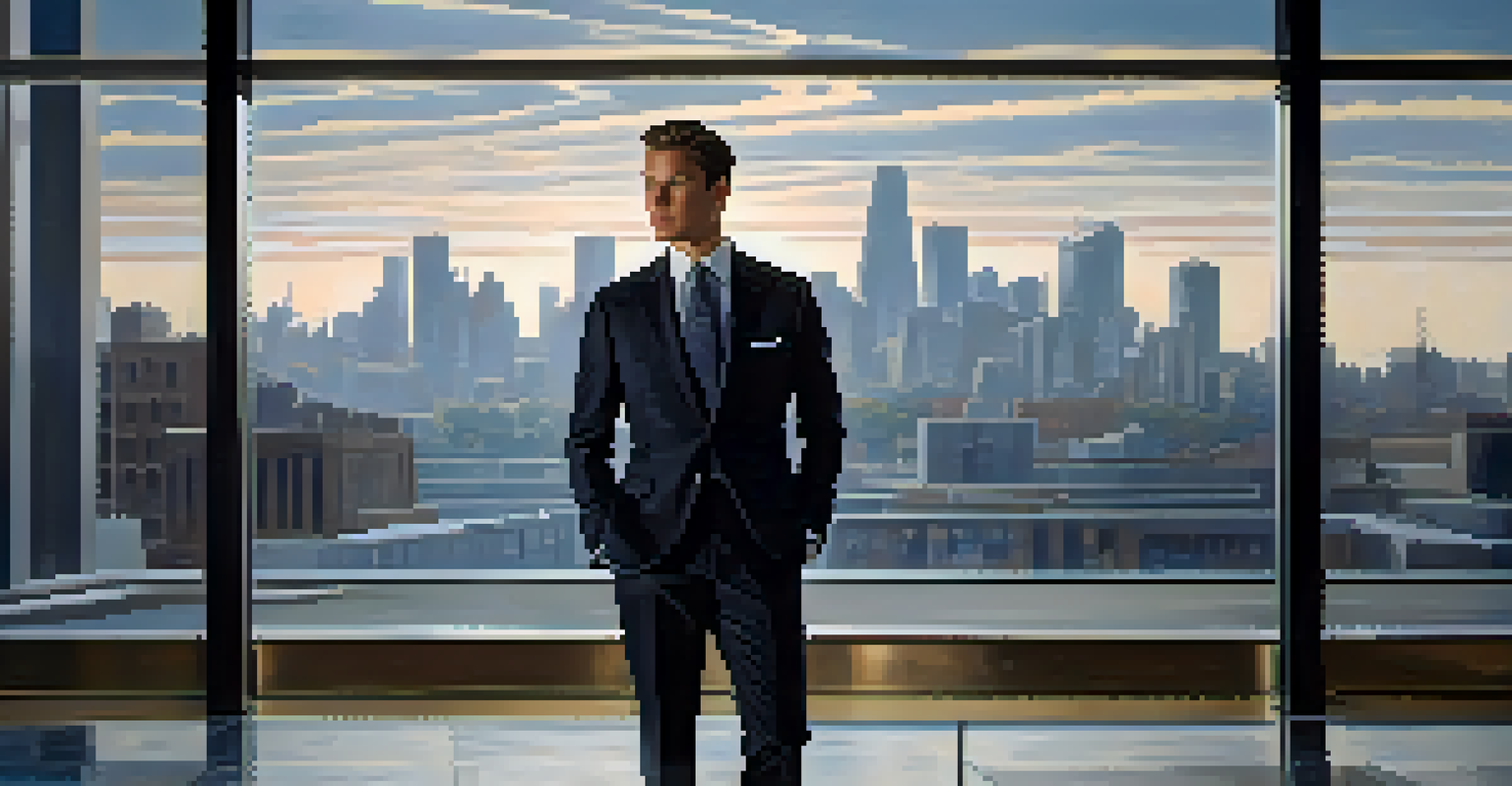Emotional Triggers: How Feelings Affect Fashion Purchases

Understanding Emotional Triggers in Fashion
Emotional triggers play a crucial role in fashion purchases, often driving consumer behavior in ways we may not fully realize. These triggers can range from feelings of joy to nostalgia, subtly influencing our choices when shopping. For example, a vibrant color may evoke happiness, prompting someone to buy a dress they feel good in.
Fashion is the armor to survive the reality of everyday life.
Consumers often seek clothing that resonates with their current emotional state. When someone is feeling down, they might gravitate towards bright, uplifting pieces to boost their mood. Conversely, during stressful times, people may opt for comfortable, relaxed attire that brings a sense of calm.
Understanding these emotional connections allows brands to tailor their marketing strategies effectively. By tapping into the feelings associated with their products, brands can create deeper connections with their audience, making their offerings more appealing.
The Role of Nostalgia in Fashion Choices
Nostalgia is a powerful emotional trigger that significantly influences fashion. Many people are drawn to styles from their past, whether it’s the flared jeans of the 70s or the grunge look of the 90s. These styles evoke fond memories, making consumers more likely to purchase items that remind them of happier times.

For instance, a brand that reintroduces a classic design can tap into this nostalgia, appealing to consumers' emotions and memories. This strategy not only attracts older shoppers who lived through those trends but also younger consumers who admire retro aesthetics. Nostalgia can create a sense of belonging, making fashion feel timeless.
Emotions Drive Fashion Choices
Emotional triggers like joy and nostalgia significantly influence consumer behavior in fashion, affecting what people choose to purchase.
Brands can leverage nostalgia effectively by creating campaigns that highlight these feelings. By showcasing how their products fit into these cherished memories, they can foster a deeper emotional connection with their audience.
Joy and Happiness: Colors That Sell
Colors have a profound impact on emotions, and in fashion, they can trigger feelings of joy and happiness. Bright colors like yellow, orange, and pink are often associated with positive feelings, making them popular choices for clothing. When consumers wear vibrant colors, they may feel uplifted, leading to more purchases.
Clothes aren’t going to change the world, the women who wear them will.
Retailers frequently use color psychology to their advantage, designing collections that evoke happiness. For example, a spring collection filled with floral patterns and bright hues can create a cheerful shopping atmosphere. This environment encourages consumers to buy, as they associate the experience with positive emotions.
Moreover, social media plays a significant role in amplifying these emotions. When influencers showcase colorful outfits, it not only inspires followers but also connects them to those joyful feelings, prompting them to purchase similar items.
Fear of Missing Out (FOMO) and Fashion
The fear of missing out, or FOMO, is a common emotional trigger that affects fashion purchases. In today's digital age, consumers are constantly bombarded with images of trendy clothing, creating a sense of urgency to buy. This can lead to impulsive shopping decisions as individuals worry about missing out on the latest styles.
Brands capitalize on FOMO by promoting limited-edition releases or flash sales that create excitement. When shoppers see that an item is in high demand, they may rush to buy it, driven by the fear that it will be gone if they wait. This strategy effectively boosts sales and enhances brand loyalty.
FOMO Fuels Impulsive Buying
The fear of missing out (FOMO) encourages consumers to make quick purchases, often driven by social validation and limited-time offers.
Additionally, social validation plays a role in FOMO. When friends or influencers showcase trending outfits, it can intensify the urge to purchase similar items, further driving the emotional connection between consumers and fashion.
Confidence Boosting: Fashion as Empowerment
Fashion has the incredible ability to boost confidence and empower individuals. Many people turn to clothing as a means of self-expression, using their outfits to convey their personality and mood. When someone wears an outfit that makes them feel good, it can significantly enhance their self-esteem.
For example, a well-tailored suit can make someone feel powerful and ready to take on the world. This emotional connection to clothing often leads to increased purchases, as consumers seek out items that elevate their confidence. Brands that promote empowerment through their designs can attract a loyal customer base eager to feel their best.
Moreover, fashion campaigns that highlight empowerment messages resonate deeply with consumers. By showcasing diverse models and celebrating individuality, brands can create a sense of belonging that encourages shoppers to embrace their unique style.
Social Influence: Emotions and Peer Pressure
Social influence is another significant emotional trigger affecting fashion purchases. People often look to their peers for fashion inspiration, and this can lead to emotional responses that drive buying behavior. When friends or social circles adopt certain styles, individuals may feel compelled to follow suit to fit in.
This phenomenon can be seen in the rise of trends driven by social media platforms. When a trend goes viral, the emotional excitement surrounding it can lead to a rush of purchases, as consumers want to be part of the conversation. The fear of being left out can create a sense of urgency that propels shoppers to act quickly.
Fashion as Empowerment
Clothing serves as a powerful form of self-expression, where individuals seek outfits that boost their confidence and reflect their identity.
Brands can effectively harness this emotional trigger by collaborating with influencers who resonate with their target audience. By creating a sense of community around their products, they can tap into the social dynamics that drive consumer behavior.
Coping Mechanisms: Fashion and Emotional Well-Being
Many individuals turn to fashion as a coping mechanism during challenging times. Shopping can serve as a therapeutic outlet, providing a temporary escape from stress or sadness. The act of purchasing new clothing can create feelings of joy and excitement, even if just for a moment.
For instance, someone going through a breakup might indulge in retail therapy, seeking out outfits that enhance their mood and self-image. This emotional connection to fashion allows individuals to express themselves and navigate their feelings in a tangible way. It’s a reminder that clothing can be more than just fabric; it can be a source of comfort.

Brands that recognize this emotional connection can create campaigns that resonate with consumers on a deeper level. By promoting messages of self-care and positivity, they can foster a supportive community that encourages individuals to embrace their emotional journeys through fashion.